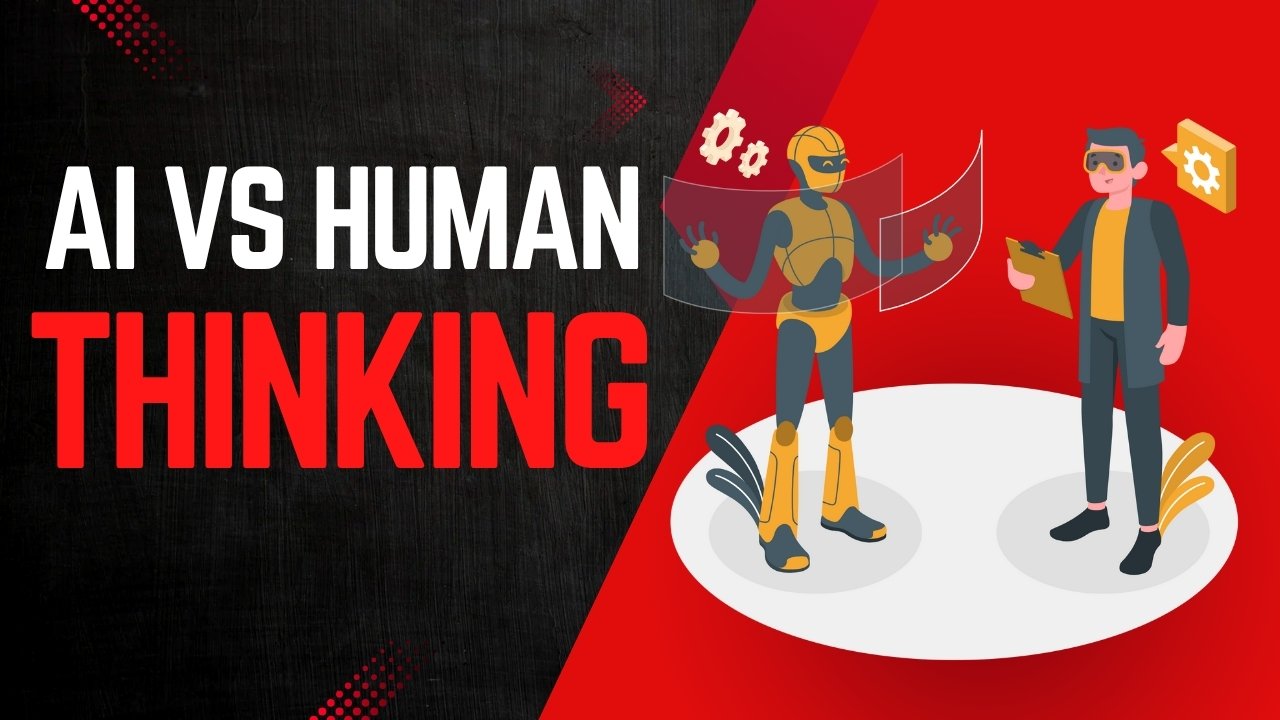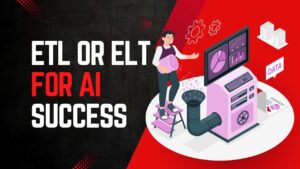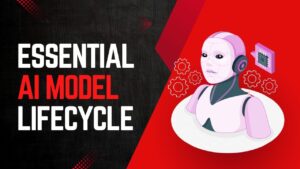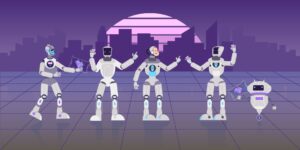Key Points
- Learning: Humans learn dynamically through neuroplasticity, often from just a few experiences, while LLMs rely on backpropagation and vast datasets, with static knowledge after training.
- Processing: The human brain processes information in parallel, focusing on concepts, whereas LLMs process tokens sequentially or with attention mechanisms, based on statistical patterns.
- Memory: Humans have multiple memory systems (sensory, working, long-term) that are associative, while LLMs store knowledge in fixed weights and use a limited context window.
- Reasoning: Humans use intuitive and logical reasoning (System 1 and System 2), while LLMs generate token sequences that mimic reasoning without true understanding.
- Error: LLMs can hallucinate, producing incorrect but confident outputs, similar to human confabulations, where false memories feel true.
- Embodiment: Humans learn through physical interaction with the world, while LLMs, being disembodied, lack sensory experiences and may miss common sense.
On This Page
Table of Contents
AI vs Human Thinking: Minds and Machines
Imagine you’re chatting with a friend who seems to know everything—poetry, trivia, even your favourite recipes. Now imagine that friend is a computer program. That’s what large language models (LLMs) are like: they generate responses that feel human, but under the hood, they’re crunching numbers, not thoughts. Both the human brain and LLMs rely on networks to process information, and both can learn and improve over time. But the similarities end there. Humans think with meaning, emotion, and physical experience; LLMs think with data, patterns, and probabilities. Let’s break it down across six key areas to see how they compare.
1. Learning: Building Knowledge
Learning is how we acquire new skills or facts, but humans and LLMs go about it in very different ways.
Human Learning: The Power of Neuroplasticity
The human brain learns through neuroplasticity, its ability to rewire neural connections based on experiences. When you practice a new skill, like juggling, your brain strengthens the connections between neurons involved in that task. This is summed up by Hebbian theory: “neurons that fire together wire together.” What’s amazing is that humans can learn from just a few tries. For example, a toddler might see a giraffe at the zoo once and remember it forever.
Real-World Analogy: Think of your brain as a garden. Each new experience is like planting a seed. With a little watering (repetition), it grows into a strong plant (a lasting memory). Sometimes, one vivid experience is enough to make that plant stick around for years.
AI Learning: Backpropagation and Big Data
LLMs learn through backpropagation, a process where they adjust internal parameters (weights) to reduce errors in predicting text. This requires massive amounts of data—think millions of sentences from books, websites, and social media. To learn a word like “serendipity,” an LLM might need to see it thousands of times in different contexts. Once trained, its knowledge is mostly fixed, unlike our ever-adapting brains.
Example: To learn what a “bicycle” is, a child might need a few rides or sightings, while an LLM needs thousands of text examples mentioning bicycles. If you introduce a new type of bike, humans might get it after a quick look; an LLM would need retraining with lots of new data.
Code Snippet: Here’s a simplified Python example showing how a neural network adjusts weights during training (don’t worry, it’s just to illustrate the idea):
import numpy as np
# Simple neural network with one layer
weights = np.random.rand(2, 1) # Random initial weights
inputs = np.array([[0, 0], [0, 1], [1, 0], [1, 1]]) # Example inputs
targets = np.array([[0], [1], [1], [0]]) # Desired outputs (XOR problem)
learning_rate = 0.1
for _ in range(1000): # Many iterations
predictions = np.dot(inputs, weights) # Forward pass
errors = targets - predictions # Calculate errors
weights += learning_rate * np.dot(inputs.T, errors) # Update weights (backpropagation)
print(weights) # Adjusted weights after trainingComparison: Humans are flexible, learning from minimal exposure and adapting on the fly. LLMs need huge datasets and stay static unless retrained. Recent advances like few-shot learning try to bridge this gap, but AI still lags behind human adaptability.
| Learning Aspect | Human Learning | AI Learning (LLMs) |
|---|---|---|
| Mechanism | Neuroplasticity: rewiring neurons | Backpropagation: adjusting weights |
| Data Needed | Few examples, often one | Millions of examples |
| Adaptability | Dynamic, lifelong learning | Static post-training, needs retraining |
| Example | Learning “dog” from one encounter | Needs thousands of “dog” references |
2. Processing: Crunching the Input
How we handle incoming information is another big divide.
Human Processing: Parallel and Conceptual
The human brain is a parallel processing powerhouse, with billions of neurons and trillions of synapses firing at once. Different regions handle specific tasks—vision, language, movement—but they work together seamlessly. We process concepts, not just data. When you hear, “The moon is full tonight,” you picture the glowing orb and feel its magic, connecting it to past nights.
Analogy: Your brain is like a bustling city, with different neighborhoods (brain regions) handling traffic, utilities, and events all at once, creating a vibrant, unified experience.
AI Processing: Tokens and Attention
LLMs break text into tokens (words or subwords) and turn them into numerical vectors. In transformer models, an attention mechanism decides which tokens matter most for predicting the next one. For example, in “The dog chased the cat,” the model might focus on “dog” and “chased” to predict “cat.” While transformers process tokens in parallel within layers, they’re still limited to text patterns, not real-world understanding.
Example: Reading “The dog chased the cat,” you visualize the chase. An LLM processes it token by token, predicting “cat” based on statistical likelihood, not a mental image.
Analogy: Imagine listening to a story in a noisy café. You focus on your friend’s words, ignoring the chatter—that’s like the attention mechanism, zeroing in on relevant tokens.
| Processing Aspect | Human Processing | AI Processing (LLMs) |
|---|---|---|
| Parallelism | Massively parallel, all at once | Parallel within layers, token-based |
| Specialization | Specialized brain regions | Uniform transformer layers |
| Modality | Multimodal: sight, sound, touch | Text only |
| Level | Concepts and meanings | Tokens and vectors |
3. Memory: Holding Onto Knowledge
Memory is how we store and retrieve information, but the systems are night and day.
Human Memory: Layered and Associative
Humans have three memory types:
- Sensory Memory: Brief, fleeting impressions (e.g., the afterimage of a bright light).
- Working Memory: Short-term storage for tasks, holding about 7 items (e.g., a phone number you’re dialing).
- Long-Term Memory: Vast, lasting storage for facts and skills (e.g., your first bike ride).
Our memories are associative, linked by meaning or emotion. The smell of pine trees might transport you to a childhood camping trip.
Example: Hearing “Happy Birthday” might spark memories of your last party, complete with cake and laughter.
AI Memory: Weights and Windows
LLMs store knowledge in their weights, fixed during training, like a snapshot of the internet. Their context window—the current input sequence—acts as working memory but forgets when full. Unlike human memories, AI’s aren’t tied to personal experiences.
Example: Ask an LLM about “pine trees.” It might describe them accurately if trained well, but it won’t feel their scent or recall a specific forest moment.
| Memory Aspect | Human Memory | AI Memory (LLMs) |
|---|---|---|
| Types | Sensory, working, long-term | Weights, context window |
| Duration | Seconds to decades | Fixed post-training, window-limited |
| Associative | Linked by meaning, emotion | Pattern-based, no personal ties |
| Example | Pine smell recalls camping | Pine description from text data |
4. Reasoning: Thinking It Through
Reasoning is about solving problems and drawing conclusions, but the processes differ.
Human Reasoning: Fast and Slow
Humans use two reasoning systems (per Daniel Kahneman):
- System 1: Quick, intuitive (e.g., dodging a ball).
- System 2: Slow, logical (e.g., balancing a checkbook).
Example: You solve “All birds fly. A sparrow is a bird. So, a sparrow flies” using System 2 logic, instantly knowing it’s true.
AI Reasoning: Mimicking Logic
LLMs don’t reason; they generate token sequences that look like reasoning, based on training data patterns. Chain-of-thought prompting can make them list steps, but it’s still pattern matching, not understanding.
Example: Asked to count the ‘r’s in “strawberry,” an LLM might guess wrong, relying on patterns, while you’d count each letter logically.
| Reasoning Aspect | Human Reasoning | AI Reasoning (LLMs) |
|---|---|---|
| Types | System 1 (fast), System 2 (logical) | Token sequence generation |
| Process | Intuitive or step-by-step logic | Statistical pattern matching |
| Flexibility | Adapts to new problems | Limited by training data |
| Example | Logical syllogism | Pattern-based prediction |
5. Error: When Things Go Wrong
Mistakes happen, but why and how they occur sets humans and AI apart.
AI Hallucinations
LLMs hallucinate, confidently stating falsehoods due to data gaps or pattern errors.
Example: An LLM might say, “The Eiffel Tower is in Florida,” if its training data included such a mistake.
Human Confabulations
Humans confabulate, creating false memories they believe are true, filling in gaps to make sense of things.
Example: You might “recall” a family picnic that never happened, feeling it’s real because of emotional associations.
Comparison: Both produce plausible errors, but human confabulations are personal, while AI hallucinations are data-driven.
| Error Aspect | Human Errors | AI Errors (LLMs) |
|---|---|---|
| Type | Confabulations: false memories | Hallucinations: false outputs |
| Cause | Memory reconstruction, emotion | Data gaps, pattern misapplication |
| Correction | Can self-correct through reflection | Needs retraining or human oversight |
| Example | “I was there!” (but you weren’t) | “Florida has the Eiffel Tower” |
6. Embodiment: Body and Soul
The biggest gap is embodiment—living in the physical world.
Human Embodiment
Humans are embodied, shaped by physical interactions. You know “hot” from touching a stove, not just reading about heat.
Example: You understand “falling” because you’ve tripped or jumped, feeling gravity’s pull.
AI Disembodiment
LLMs are disembodied, existing as code on servers. Their knowledge comes from text, not senses, so they might miss common sense.
Example: An LLM might say, “A feather floats upward,” if it’s read too many fantasy stories, not knowing gravity firsthand.
Comparison: Human thinking is grounded in physical reality; LLMs float in a digital void, relying on human-written words.
| Embodiment Aspect | Human Embodiment | AI Embodiment (LLMs) |
|---|---|---|
| Physicality | Physical body, sensory experiences | Software, no senses |
| Knowledge Source | Direct interaction with world | Text data from humans |
| Common Sense | Gained through life | Limited, data-dependent |
| Example | Feeling rain to know “wet” | Describing “wet” from text patterns |
Conclusion: Minds and Machines Together
Humans and LLMs both learn, process, remember, reason, err, and exist—but differently. Humans are dynamic, conceptual, associative, logical, experiential, and embodied. LLMs are static, token-based, pattern-driven, and disembodied. AI shines in speed and data volume; humans excel in meaning and adaptability. Together, they can achieve great things—AI crunching data, humans adding soul.
FAQs
Do AI models like LLMs think like humans?
No, LLMs don’t think like humans. They’re computer programs that process text using math and patterns, not thoughts or feelings. Humans think with ideas, emotions, and physical experiences, while LLMs crunch data to predict words. For example, when you think about a sunset, you might feel its warmth or recall a specific evening. An LLM just strings together words about sunsets based on what it’s read.
How do humans and LLMs learn differently?
Humans learn through neuroplasticity, where our brains rewire connections when we experience something new, like learning to ride a bike after a few tries. LLMs learn through backpropagation, adjusting their internal settings by analyzing millions of text examples, like seeing the word “bike” thousands of times. Humans can learn from just one or two examples, but LLMs need tons of data and stay mostly fixed after training.
What’s the difference in how humans and LLMs process information?
Humans process information like a team effort in our brains, with different parts handling sight, sound, or ideas all at once, creating a big picture. For instance, hearing “rain” makes you imagine its sound and feel. LLMs break text into tokens (like words or pieces of words) and use an attention mechanism to decide which tokens matter for the next word. They don’t “imagine” rain; they just predict words based on patterns.
How do human and AI memories work?
Humans have layered memories: sensory memory (quick impressions, like a flash of light), working memory (temporary, like holding a phone number in your head), and long-term memory (lasting years, like your first pet). Our memories connect through meaning or emotions, like a song reminding you of a friend. LLMs store knowledge in their weights (fixed data from training) and use a context window (a short-term memory for the current conversation), but they forget when the window fills up and don’t have emotional connections.
Can LLMs reason like humans do?
Not really. Humans use two types of reasoning: System 1 (quick, like knowing a face is familiar) and System 2 (logical, like solving a puzzle). LLMs generate word sequences that look like reasoning but are based on patterns, not understanding. For example, if you ask an LLM to count the ‘r’s in “strawberry,” it might guess wrong because it’s predicting, not counting logically like you would.
Why do LLMs make mistakes, and how are they like human errors?
LLMs hallucinate, meaning they confidently say wrong things, like claiming “cats can fly” if their data has weird patterns. Humans confabulate, creating false memories we believe are true, like “remembering” a party that didn’t happen. Both seem convincing, but human errors come from personal experiences, while AI errors come from data gaps or misinterpretations.
What does “embodiment” mean, and why does it matter?
Embodiment means humans live in the physical world, so our thinking is shaped by senses like touch or taste. You know “hot” because you’ve felt a stove. LLMs are disembodied, existing as code without senses. They learn about “hot” from text, not experience, so they might say silly things, like “ice is hot,” if their data is off. This makes humans better at common sense.
Can LLMs ever think like humans?
Not with current tech. LLMs are great at processing huge amounts of text quickly, but they lack emotions, sensory experiences, and true understanding. Humans bring meaning and flexibility to thinking, while LLMs rely on data patterns. Future AI might get closer by mimicking human learning or senses, but for now, they’re more like super-smart calculators for words.
What are LLMs good at compared to humans?
LLMs shine at handling massive amounts of information fast. They can summarize books, translate languages, or generate stories in seconds, pulling from vast datasets. Humans are slower at processing lots of data but excel at understanding context, emotions, and new situations with little info. For example, an LLM can write a poem about love, but it doesn’t feel love like you do.
How can humans and LLMs work together?
Humans and LLMs are a great team! LLMs can crunch data, spot patterns, or draft ideas quickly—like a tireless assistant. Humans add creativity, emotional insight, and real-world experience to refine AI outputs. For instance, an LLM might draft a report, but you’d check it for accuracy and add personal flair. Together, we get the best of speed and soul.




